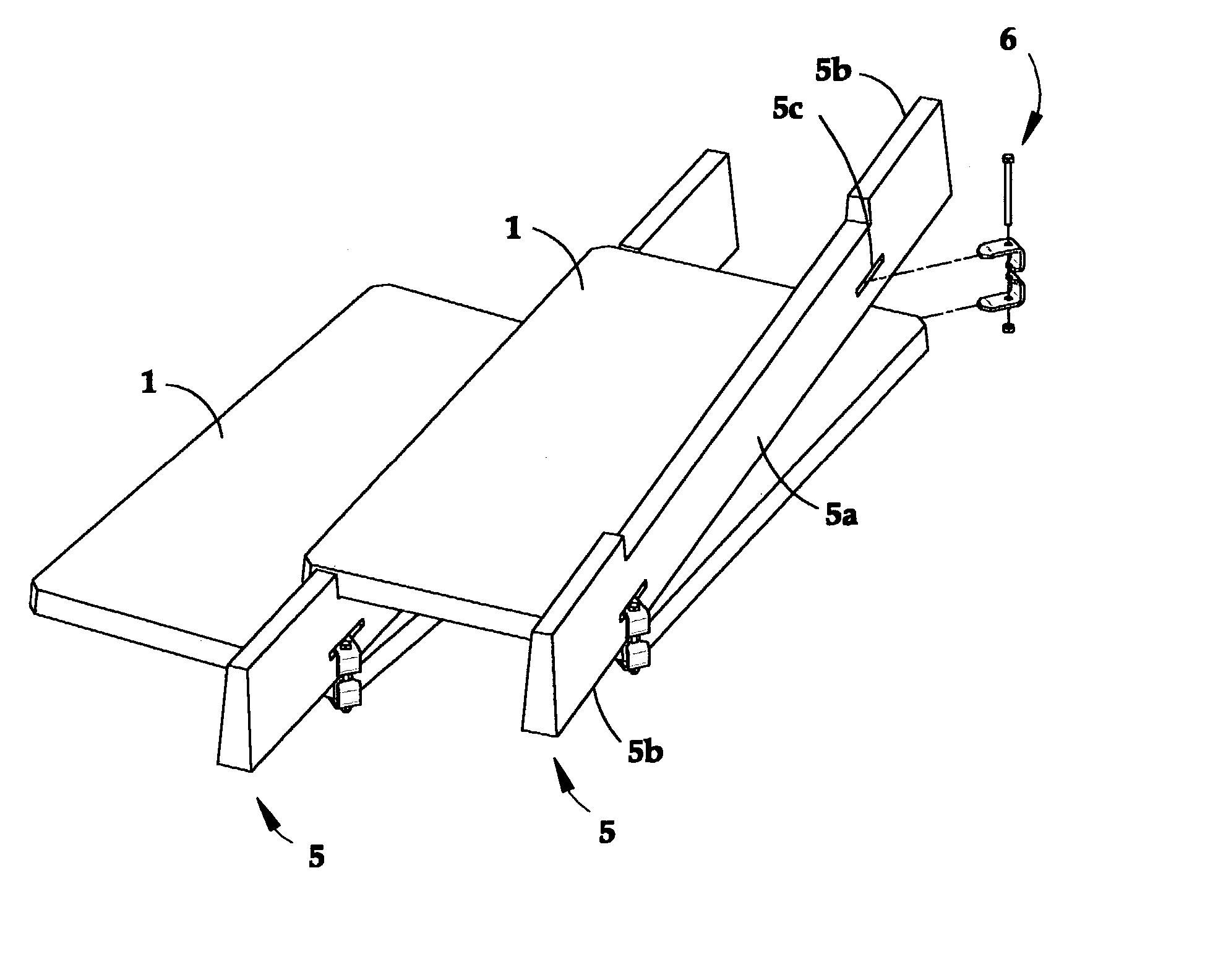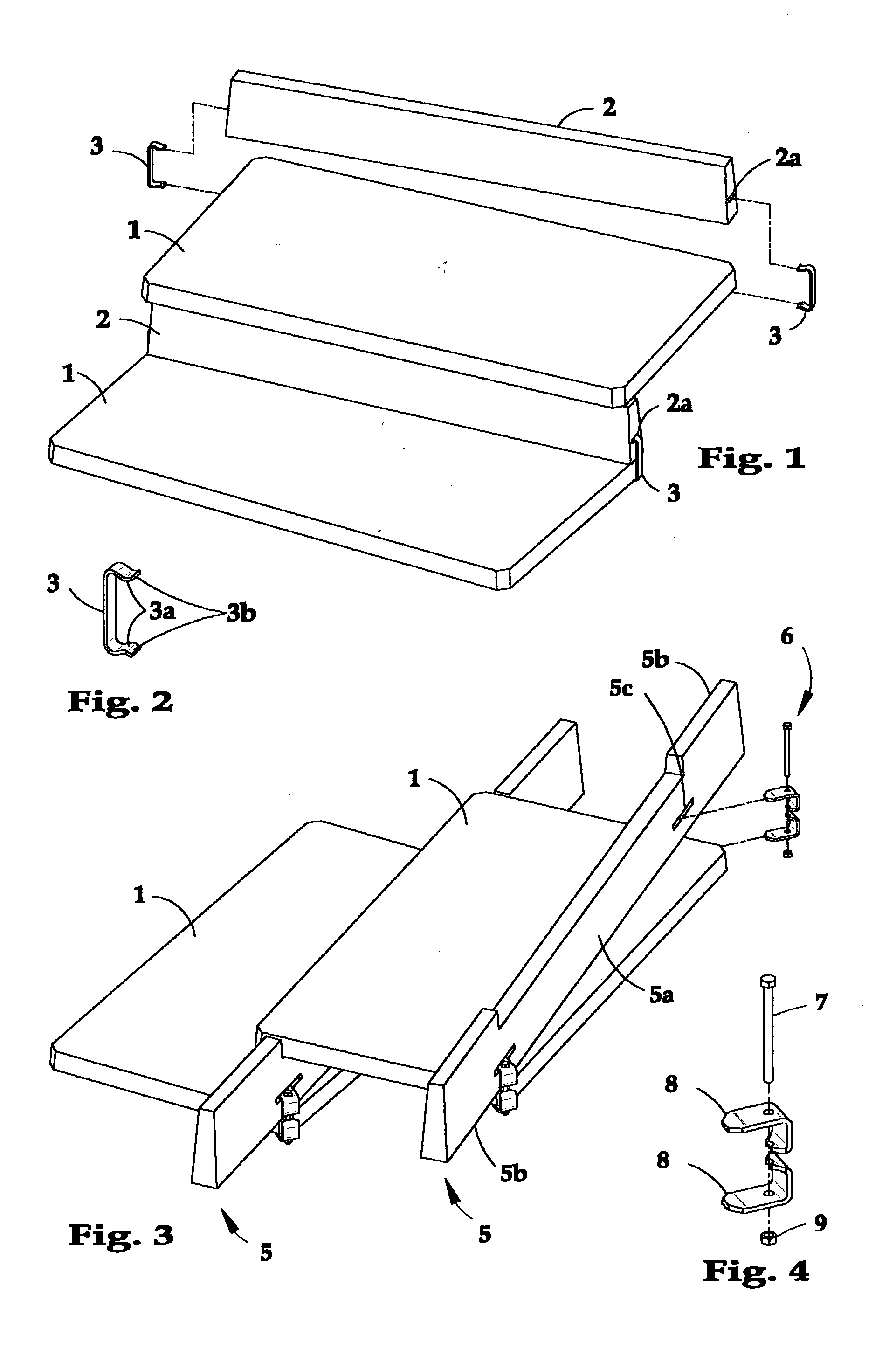Adjustable and reversibly securable terrace stairs
a terrace and adjustable technology, applied in the field of terrace stairs, can solve the problems of unsecured risers, prone to dislocation, and the inside of the riser surface has to be compacted, and achieves the effect of convenient filling and leveling of each step, convenient and quick adjustment, and convenient compacting
- Summary
- Abstract
- Description
- Claims
- Application Information
AI Technical Summary
Benefits of technology
Problems solved by technology
Method used
Image
Examples
Embodiment Construction
[0036] A preferred embodiment of the invention is illustrated in FIG. 1 with spring clamp 3 enlarged as shown in FIG. 2. The combination has a tread 1, riser 2 and two spring clamps 3. Step 1 and riser 2 are preferably concrete, rock or plastic; spring clamp 3 is preferably metal or plastic with sufficient spring force for having clamping surface 3a and lead-in angle 3b in each leg. Riser 2 has two spring clamp cavities 2a, one at each end. Spring clamp cavity 2a is located such that the jaws of spring clamp 3 will have sufficient tension when spread apart so as to function as a clamp when forcibly positioned over the bottom surface of tread 1 and upward surface of spring clamp cavity 2a. Lead-in angle 3b in each leg of spring clamp 3 eases the installation of it by providing starting slope for the spring. Clamping surfaces 3a would be contacting two surfaces when installed. Riser 2 can thus be clamped to tread 1 in the desired location and yaw angle within the limits of the structu...
PUM
 Login to View More
Login to View More Abstract
Description
Claims
Application Information
 Login to View More
Login to View More - R&D
- Intellectual Property
- Life Sciences
- Materials
- Tech Scout
- Unparalleled Data Quality
- Higher Quality Content
- 60% Fewer Hallucinations
Browse by: Latest US Patents, China's latest patents, Technical Efficacy Thesaurus, Application Domain, Technology Topic, Popular Technical Reports.
© 2025 PatSnap. All rights reserved.Legal|Privacy policy|Modern Slavery Act Transparency Statement|Sitemap|About US| Contact US: help@patsnap.com


